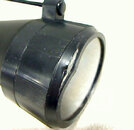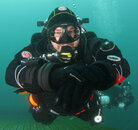PeterNBiddle
Contributor
Yes and you see lots of functioning gauges with cracked, shattered, or missing glass faces. I've only seen 1 oil pressure gauge with an intact glass face malfunction after 40 years of use, but that was only at the connection point and it is now fixed and going strong (in my car). ---------- Post added November 3rd, 2013 at 08:20 PM ---------- A Solucination?
Nearly all of the precision shooters I know use lens caps. They do this because this is an incredibly easy bit of damage leading to cracked lenses.

This happens to be similar damage to cel phones running gorilla glass (tougher I believe, by thickness, than instrument lenses) where dropping a cel-phone on the corner without a case is more likely to create broken glass. But that's anecdotal.
Let's imagine this test. We take two sets of brass and glass SPGs. One set is booted, one isn't.
We mount them into a manifold and clamp that manifold into a vise. We then drop a cinder block, by a corner, corner first, onto each, from incremental distances of 1mm per increment, starting at 1mm.
We drop them onto the outside curved edge, back, and front lens.
I'm betting that the only equal resistance to damage would be when we drop the cinder block onto the glass lens itself. Do you really think that there would be identical results from each of the three tested angles?
And would any of us feel like we'd want to keep diving a gauge with a broken lens?




